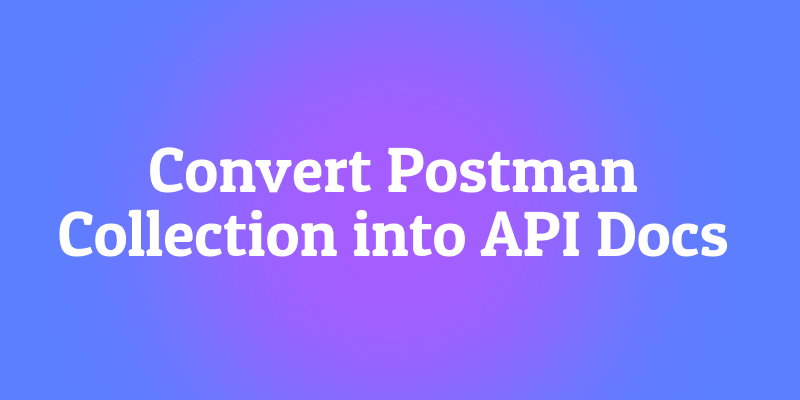Browser automation has long been a cornerstone of modern software development, testing, and data extraction. For years, frameworks like Selenium, Puppeteer, and more recently, Playwright, have dominated the landscape. These tools offer granular control over browser actions, but they come with a steep learning curve and a significant maintenance burden. Scripts are often brittle, breaking with the slightest change in a website's UI. On the other end of the spectrum, a new wave of AI-native agents promises to automate complex tasks using natural language, but often at the cost of reliability, predictability, and control.
Enter Stagehand, a framework that bills itself as "The AI Browser Automation Framework." It doesn't aim to replace battle-tested tools like Playwright but to amplify them. Built on top of Playwright, Stagehand injects a powerful layer of AI, allowing developers to blend traditional, code-based automation with high-level, natural language instructions.
Want an integrated, All-in-One platform for your Developer Team to work together with maximum productivity?
Apidog delivers all your demands, and replaces Postman at a much more affordable price!
But how good is it really? Does it strike the right balance between the precision of code and the flexibility of AI? This in-depth review and tutorial will explore Stagehand's core concepts, walk through practical examples, and evaluate its position in the rapidly evolving world of browser automation.
Why Stagehand? The Problem with the Old Ways
Before diving into the "how," it's crucial to understand the "why." Traditional browser automation is fundamentally about telling the browser exactly what to do. A typical script might look like this in Playwright:
// Find an element by its CSS selector and click it
await page.locator('button[data-testid="login-button"]').click();
// Find an input field and type into it
await page.locator('input[name="username"]').fill('my-user');
This approach is precise and reliable... until it isn't. The moment a developer changes data-testid or refactors the form's HTML structure, the script breaks. Maintaining these selectors across a large test suite or a complex web scraping project becomes a tedious and thankless job.
Check out the demo provided by the Stagehand team:

High-level AI agents try to solve this by abstracting away the implementation details. You simply tell the agent, "Log in with my credentials," and it figures out the necessary steps. While this sounds magical, it can be unpredictable in production environments. The agent might fail on an unfamiliar UI, take an inefficient path, or misunderstand the instruction, leading to inconsistent results.
Stagehand aims to offer a middle path. It recognizes that sometimes you know exactly what you want to do (e.g., await page.goto('https://github.com')), and other times you want to offload the "how" to an AI (e.g., await page.act('click on the stagehand repo')). This hybrid approach is Stagehand's core value proposition.
The Core Pillars of Stagehand
Stagehand enhances Playwright's Page object with three primary methods: act, extract, and observe. It also introduces a powerful agent for handling more complex, multi-step tasks.
act: Executing Actions with Natural Language
The act method is the heart of Stagehand's interactive capabilities. It takes a plain English instruction and executes the corresponding action on the page.
// Instead of brittle selectors...
await page.act("Click the sign in button");
await page.act("Type 'hello world' into the search input");
Behind the scenes, an AI model analyzes the current state of the web page (the DOM), identifies the most relevant interactive elements (buttons, links, input fields), and maps the instruction to a specific action, like a click or a key press. This makes scripts more resilient to minor UI changes. As long as a human can identify the "sign in button," Stagehand likely can too, even if its underlying code has changed.
The key to using act effectively is to keep instructions atomic and specific. An instruction like "Order me a pizza" is too high-level for act. Instead, you would break it down into a series of atomic steps: "Click on the pepperoni pizza," "Select 'large' size," "Add to cart," and "Proceed to checkout."
observe and Caching: Adding Predictability to AI
A common concern with using AI is unpredictability. Will the model choose the right element every time? Stagehand addresses this with the observe method. observe doesn't execute an action; it returns a list of potential actions that match the instruction.
const [action] = await page.observe("Click the sign in button");
The action object returned is a serializable descriptor of the operation Stagehand intends to perform. You can inspect it, log it, and, most importantly, feed it directly back into act:
const [action] = await page.observe("Click the sign in button");
await page.act(action);
This two-step process provides a powerful "preview" feature. But its real strength lies in caching. For repetitive tasks, you can observe an action once, save the result, and reuse it in subsequent runs.
const instruction = "Click the sign in button";
let cachedAction = await getFromCache(instruction);
if (cachedAction) {
await page.act(cachedAction);
} else {
const [observedAction] = await page.observe(instruction);
await saveToCache(instruction, observedAction);
await page.act(observedAction);
}
This caching strategy offers several benefits:
- Reliability: It ensures the exact same action is performed every time, removing the variability of the AI model.
- Speed: It bypasses the need for an AI call, making the automation significantly faster.
- Cost: It saves on API calls to the underlying language model, reducing operational costs.
extract: Intelligent Data Extraction
Scraping data from a webpage with traditional tools involves writing CSS or XPath selectors to pinpoint the data. This is another form of brittle coupling to the UI. Stagehand's extract method revolutionizes this process by allowing you to specify what you want to extract in natural language.
You can optionally provide a Zod schema to ensure the output is structured correctly. Zod is a popular TypeScript-first schema declaration and validation library, and its integration here is a game-changer.
Imagine you're on a GitHub pull request page and want to get the author's username and the PR title. With extract, it's as simple as this:
import { z } from "zod";
// ... inside an async function
const { author, title } = await page.extract({
instruction: "extract the author and title of the PR",
schema: z.object({
author: z.string().describe("The username of the PR author"),
title: z.string().describe("The title of the PR"),
}),
});
console.log(`PR: "${title}" by ${author}`);
Stagehand's AI reads the page, understands the context, and populates the Zod schema with the requested data. This is far more robust than relying on selectors like #pull_request_header .author which could change at any time. You can even extract complex nested data, including arrays of objects, by defining the appropriate Zod schema.
agent: For Autonomous, Multi-Step Tasks
While act is for single, atomic actions, agent is for orchestrating larger, more complex goals. The agent can take a high-level objective and break it down into a sequence of act and extract calls on its own.
// Navigate to a website
await stagehand.page.goto("https://www.google.com");
const agent = stagehand.agent({
provider: "openai",
model: "gpt-4o", // Or an Anthropic model
});
// Execute the agent
await agent.execute(
"Find the official website for the Stagehand framework and tell me who developed it."
);
The agent provides a "human-in-the-loop" experience for your automation scripts. It's ideal for exploratory tasks or navigating complex, unfamiliar websites where pre-defining every single step would be impractical. It supports top-tier models from both OpenAI and Anthropic, giving developers access to state-of-the-art AI capabilities with minimal setup.
Getting Started: A Mini-Tutorial to Use Stagehand Team
Watch Anirudh demo create-browser-app to create a Stagehand project here:
The quickest way to start a Stagehand project is by using their command-line tool.
npx create-browser-app my-stagehand-project
cd my-stagehand-project
This scaffolds a new project with all the necessary dependencies, configuration files, and a sample script. You'll need to add your API keys for an LLM provider (like OpenAI or Anthropic) and optionally a Browserbase key (for cloud-based browser execution) to the .env file.
A basic script looks like this:
import { Stagehand } from "@browserbasehq/stagehand";
import StagehandConfig from "./stagehand.config"; // Your project's config
import { z } from "zod";
async function main() {
// 1. Initialize Stagehand
const stagehand = new Stagehand(StagehandConfig);
await stagehand.init();
const page = stagehand.page;
try {
// 2. Navigate to a page
await page.goto("https://github.com/trending");
// 3. Perform actions
await page.act("Click on the first repository in the list");
// 4. Extract data
const { description } = await page.extract({
instruction: "Extract the repository description",
schema: z.object({
description: z.string(),
}),
});
console.log("Repository description:", description);
} finally {
// 5. Clean up
await stagehand.close();
}
}
main();
This simple example demonstrates the entire lifecycle: initialization, navigation, action, extraction, and cleanup. It's clean, readable, and remarkably resilient to UI changes on the GitHub trending page.
The Verdict: How Good Is It?
After a deep dive into its features and philosophy, it's clear that Stagehand is more than just another automation tool. It's a thoughtful and powerful framework that successfully bridges the gap between traditional, code-heavy automation and the brave new world of AI agents.
The Good:
- Developer Experience: By building on top of Playwright, it offers a familiar API to many developers. The addition of
actandextractmakes writing automation scripts faster and more intuitive. - Resilience: Scripts are far less brittle and more resistant to UI changes, drastically reducing the maintenance burden.
- Control & Predictability: The
observeand caching mechanism is a brilliant solution to the unpredictability problem of AI, making it viable for production use cases. - Power & Flexibility: The combination of atomic
actcalls, intelligentextractschemas, and the high-levelagentprovides a spectrum of tools suitable for almost any browser automation task. - Structured Data Extraction: The integration with Zod for
extractis a standout feature, making data scraping easier and more reliable than ever before.
The Potential Downsides:
- Dependency on LLMs: The quality of the automation is tied to the performance of the underlying AI models. While today's models are incredibly capable, they aren't perfect.
- Cost: API calls to powerful models aren't free. While the caching strategy helps mitigate this, high-volume usage could incur costs.
- Learning Curve: While simpler than raw Playwright for many tasks, developers still need to understand the core concepts of
act,observe,extract, and when to use each. Thinking in terms of "atomic actions" vs. "high-level goals" is a new skill.
Conclusion
So, how good is Stagehand? It's exceptionally good. It's not a magic bullet, but it represents a significant leap forward in browser automation. It empowers developers to build more robust, more intelligent, and more capable automations with less effort. By giving you the choice to write low-level code when you need precision and use high-level AI when you need flexibility, Stagehand provides a pragmatic and powerful toolkit for the modern developer.
If you're a QA engineer tired of updating selectors, a data scientist looking for a better way to scrape the web, or a developer building complex browser-based workflows, Stagehand is not just worth a look—it might just become your new favorite tool. It successfully delivers on its promise, making it a leading contender for the title of "The AI Browser Automation Framework."
Want an integrated, All-in-One platform for your Developer Team to work together with maximum productivity?
Apidog delivers all your demands, and replaces Postman at a much more affordable price!



